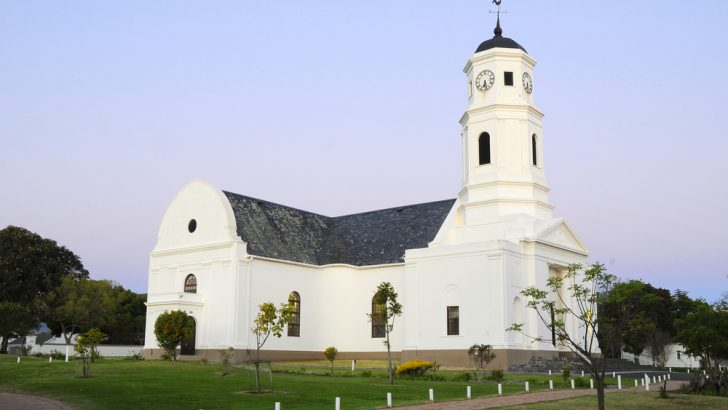The Life and Struggles of Our Mother Walatta Petros
written by Galawdewos, translated and edited by Wendy Laura Belcher & Michael Kleiner (Princeton University Press, £27.95)
Here is a really remarkable book on which to begin the New Year, a book that will open up for many a new horizon of Christian culture and faith.
This long book is a 17th-century biography of a very holy woman. But its distinction is that she is African, and the book contains elements of autobiography in a biographical framework. It is the work of an African author and has long been regarded as an important book by the Ethiopian Orthodox Tawahado Church as the Ethiopians now prefer to call it. As the earliest known biography of an African woman it is unique and it should be much better known.
Set down in 1672 by a young priest from a rich tradition, a generation after the saint’s death, it is written in a vivid style, but one which expressed the very ancient faith of a Christian Church founded in the 4th Century.
Though Dr Belcher does not allude to the matter, according to the Acts of the Apostles an Ethiopian eunuch, a servant of Queen Candace of Ethiopia, was baptised soon after the resurrection (Acts 8: 26-40). Eusebius, in his history of the early Church (I: 13), records that this man returned to Ethiopia where he propagated the new faith. About 330AD the king of Aksum embraced Christianity and declared it the state religion.
Ethiopia is thus (some recent scholars argue) the oldest Christian nation in the world.
Ethiopia was a Christian country long before Ireland and other parts of Europe. The text also reveals a Church entirely untouched in its thought by Europe, especially the ideas of Greece and Rome that did so much to shape the Churches of Europe.
Here we can see perhaps something closer to what Christianity really was like before it became entangled with notions derived from the imperial ambitions of Rome.
The atmosphere of faith in the highlands of Ethiopia, surrounded by animists to the south and Muslims to the north and east, recalls nothing so much as the atmosphere of the Old Testament and parts of the Gospels.
Roles
Yet it will strike the reader that the roles of literacy, of women as leaders, of Christianity in a devout but non-European form are counter-intuitive to what so many think of Africa. Wendy Belcher in her introduction emphasises this, and how surprising it may be to North American readers – and I suspect to many European ones. She was an exemplary woman, but not a unique one in her religious leadership role.
Ethiopia was the one realm of Africa that was never colonised. It resisted the British and the Italians, only falling under Italian Fascist control for a brief six-year period 1936-1941, after the country was betrayed by the League of Nations – many Irish people in 1936 supported the Italian occupation.
In some ways Africa is not a new continent, but a very ancient one, a landscape that is the oldest known to human beings, where cultures have arisen and died since the beginning of time. There is a great sense of ancient faith in the life of Walatta Petros, but at the heart of the narrative, and what makes this book of particular interest, is the fact that Walatta Petros led the resistance again the incursion of Jesuit missionaries into the country in the 1600s.
For a time the king adhered to Catholicism under the influence of the Portuguese who had arrived to help Ethiopia stave off the Muslim threat.
There were doctrinal differences, but these revolved around the pre-Chalcedonic views of the Ethiopians about the nature of Christ.
However Dr Belcher mentions that today Ethiopian theologians believe that this dispute which led to them being seen as ‘heretics’ was due to a linguistic confusion of the inherent meaning of the Greek word for “nature”, in a language such as Ge’ez with very a different system of thought.
In this book the Jesuits are seen by the Ethiopian Christians as very much a danger to their faith. The highlands of Ethiopia were a place where the disciples of St Ignatius failed completely. Mother Walatta Petros is honoured in Ethiopia for her notable defence of a faith received directly from the Apostle Philip by baptism.
The narratives evoke a religious life very close to that which must have been lived in the little monasteries of Early Christian Ireland, in so many cultural details.
The book consists, aside from the long and highly informative introduction by Wendy Belcher, of the life struggles of Walatta Petros which runs to 92 short chapters.
To this is attached traditionally an account of the m iracles of Walatta Petros (some 27 tales), an account of the community she established on Lake Tana, and a long poem of praise on which each part of her body is invoked for praise (including her womb).
This book is, of course, intended for an academic audience. But African culture is of immense interest today for many ordinary readers.
Certainly this reviewer has been fascinated by Ethiopia since the age of 12, what with the tales of Solomon and the Queen of Sheba, her son founding the kingdom, and the legends of the Ark of the Covenant – supposed to be enshrined in the church of St Mary at Aksum, a legend dissected with great scholarly subtlety by the late Stuart Munro-Hay in his last book, The Quest for the Ark of the Covenant (I. B. Tauris, £15.99).
But this present book will, I think, appeal to everyone who thinks seriously about Africa, beyond the daily headlines of war, famine, disease, and corruption – so many troubles derived from European interference, as much as from local political posturing and tribalism.
The book is finely produced, and printed, with many colour illustrations. It is also cased in cloth, a rarity these days, and as such the price asked is little short of a miracle for a book than runs to 500 closely printed pages. Some Irish publishers might learn something from Princeton University Press.


 Peter Costello
Peter Costello